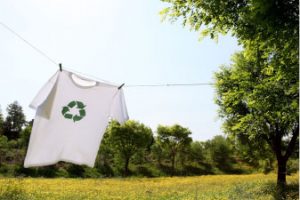“We only have one Planet Earth, and yet by 2050 we will be consuming as if we had three.”
Virginijus Sinkevičius, European Union (EU) Commissioner for the Environment, Oceans and Fisheries, states a problem that is facing all of us. Solving this problem means choosing more sustainable options, thereby creating opportunities for manufacturers.
On December 11, 2019, EU President Ursula von der Leyen outlined the European Green Deal. The EU aims to make Europe the first climate-neutral continent by 2050. To succeed in this goal, it must convert a linear economy into a circular economy, where consumers use, reuse, repair and recycle, rather than just use and discard.
On March 11, 2020, the European Commission adopted its Circular Economy Action Plan (CEAP). The plan focuses attention upon the industry sectors that use the most resources and which could benefit most from the circular economic model. Sectors include electronics and ICT, batteries and vehicles, packaging, plastics, construction and textiles.
Individual countries are also taking the initiative. France has recently introduced its ‘Anti-waste Law for a Circular Economy’. This creates a new challenge for brands, as the aim is to allow customers to be able to compare the environmental impact of their purchases with other similar items. Alongside provisions to phase out the use of disposable plastics are measures to fight waste, solitary use, and planned obsolescence.
The goal of a circular economy isn’t restricted to Europe, markets around the world are beginning to wake up to the need for greater sustainability in the clothing and textile industry.
Waste In The Textile Industry
When a consumer thinks about buying a new item of clothing, they want a garment that makes them feel and look good. It must also represent good value for money and that means high quality, durable products.
From the perspective of the consumer, durability has two meanings — physical and emotional. Physical durability means strong and well-made products that are built to last. A garment with emotional durability will continue to be worn by the consumer because it has a strong and positive association. Therefore, poorly made clothes that are designed in a way that will make them go out of fashion very quickly can be considered non-durable.
The scale of the problem is enormous. Globally, it is estimated the average consumer will discard 31.75 kilograms of clothing every year. This equates to 13 million tons of textile waste, of which around 95 percent could be reused or recycled. This is bad for:
- Environment — wasted resources, chemicals leaching into the environment, etc.;
- Consumers — constantly replacing products that do not satisfy them;
- Manufacturers and retailers — will be branded as poor quality if their products don’t last, which may ultimately lead to their brand being boycotted by consumers; and
- Holistic approach to durability.
The demands of a climate-neutral and/or circular economy provide textile manufacturers with an opportunity. Focusing on durability means they can continue to efficiently access markets while building brand loyalty, because they are focusing on meeting and exceeding the demands of consumers.
Proactive manufacturers are taking a holistic approach, looking at all aspects of production — from design and the selection of raw materials to the finished product. Design is key. According to the sustainable exchange charity WRAP, 80% of a garment’s environmental impact is decided during the design phase.
Taking a holistic approach to the problem means focusing on a variety of factors, including:
- Construction — from selecting the right raw materials, the right cut and fit, as well as the manufacturing process;
- Resistance to physical damage — abrasion, pilling, snagging, etc.;
- Colorfastness — the right dyes must be chosen to resist fading;
- Functionality — will an outdoor coat continue to repel water over the lifespan of the product?; and
- Design to fit — designers can increase longevity by creating clothes that can be adjusted to fit an individual’s shape.
Opportunity
Governments and consumers are realizing that some modern manufacturing practices are not sustainable. More durable clothing means a reduction in environmental impact through:
- Less need for clothing replacements;
- Reduced waste levels;
- Reductions in resources for manufacturing; and
- Enhance reusability, upgradability, and reparability.
For manufacturers and brands this is an opportunity. Durability means regulatory compliance, but it also means:
- Higher prices — consumers will pay more for high quality products with longer lifespans;
- Lower costs — proactive engagement means potential problems are identified and rectified at an earlier stage; and
- Brand loyalty — durable products are less lightly to fail, thereby securing psychological loyalty from consumers. Additionally, in a connected world, if a consumer likes a brand, they are likely to talk about it on review sites and social media.
The push towards a circular economy could be seen as a hindrance by some, but actually it is an opportunity.
SGS Solution
SGS has developed a comprehensive durability assessment service to help manufacturers develop garments and textiles with a longer lifespan. This service can be tailored to the individual requirements of the business, and can include testing protocols covering base materials, performance and longevity. It is proactive, augments best practice, and helps manufacturers to deliver value-added products to markets all over the world. After all, it’s only trusted because it’s tested.
August 13, 2021





